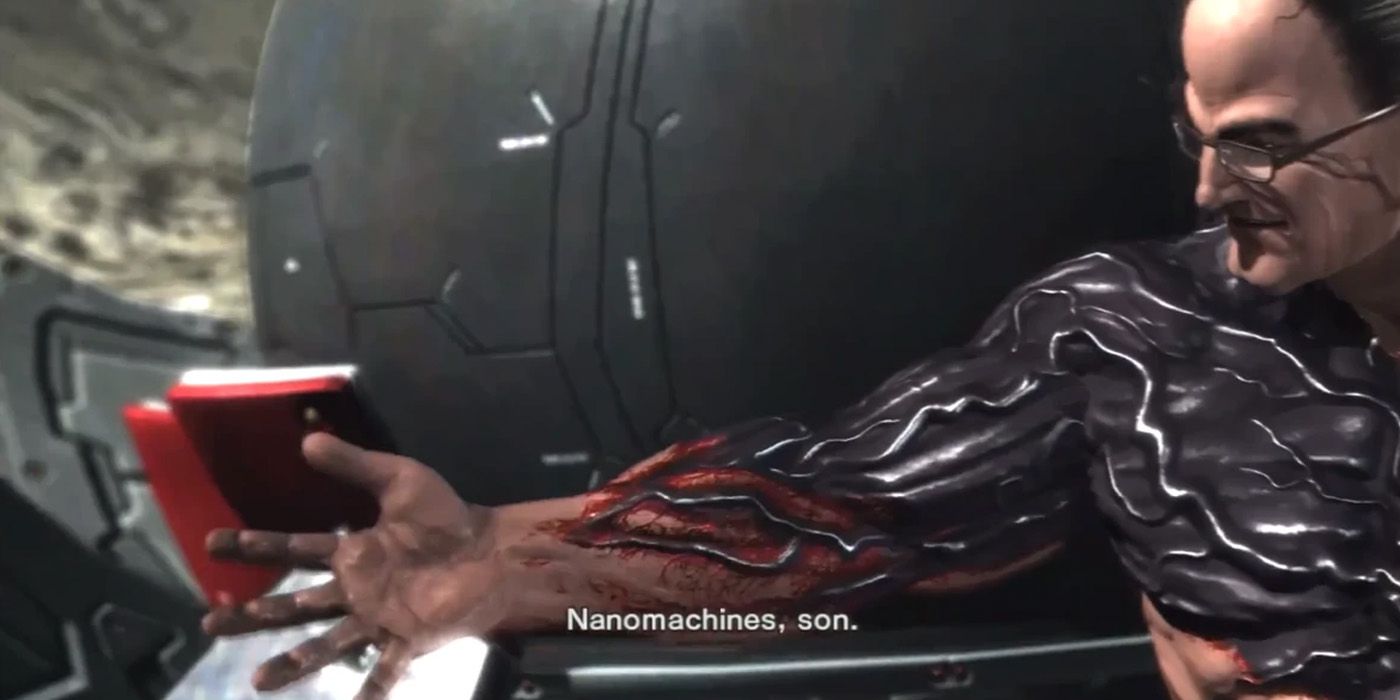The science aspect of science fiction is what gives the genre its distinct possibilities, but it can also be a burden to its creators. Luckily, those in the genre have come up with a few catch-all terms to explain away anything too complicated without raising too many questions.
The noble art of explaining sci-fi mumbo jumbo with a handful of more easily-digested phrases has a long history in every medium. Writers often need something that can do whatever they need it to do within the bounds of the story without losing suspension of disbelief. One of the best all-purpose plot sealant solutions is technology that can do anything, but can't be seen doing it.
Nanotechnology is a blanket term for any form of machinery that's too small to see with the naked eye. Referred to regularly as nanobots, nanites, or nanomachines, these tiny things seem to be capable of anything. In real life, nanotech branches into most fields of scientific studies, from molecular biology to semiconductor device physics. Robots already function as a good way of answering questions of logic in sci-fi stories, but reducing them beyond the human eye makes them even more effective. It's reminiscent of the old thought experiment that suggests anything could be possible with the specification that it's too small for any microscope to see. Across the history of science fiction, there is almost nothing that couldn't be explained by the modern marvel of tiny tech.
In the Star Trek franchise, how do the Borg assimilate their prey into the Collective and fundamentally change their bodies into those iconic cyborgs? They inject "nanoprobes" into the bloodstream. How does the T-1000 from Terminator 2: Judgement Day change its appearance to mimic anyone it sees? Its "Mimetic Pollyalloy" contains nanites that capture data and reform its shape to the desired aesthetic layout. How do Iron Man, Black Panther, and Spider-Man immediately change into their costume when danger strikes without carrying them around all the time? Nanites; T'Challa's are in his necklace, Tony's are in the arc reactor in his chest, Peter's are in a small launch-pad that fires from Avengers HQ. There are countless other examples of this trope being used to answer simple questions like these. In fact, each of the works mentioned features other examples of nanotechnology throughout their countless entries.
The first examples of nanotechnology in fiction predate the public knowledge of the concept's real-life use. The average person would have little to no knowledge of the existence of the concept until the late 80s when K. Eric Drexler wrote Engines of Creation. Drexler pulled from the important but largely ignored 1959 speech "There's Plenty of Room at the Bottom" by Richard Feynman to introduce the concept to the layman. The concept has around 50 years of history before that in the works of sci-fi authors.
Arthur C. Clarke is one of the fathers of the art form, so it should stand to reason that he would invent the modern form of the trope. His 1956 short story The Next Tenants featured machines that operated at the micrometer scale. That tale introduced a self-described mad scientist who believed that termites were the intellectual and moral betters of mankind. With that idea as his guiding star, the scientist invents a pile of new tech that's perfectly sized for these insects. The tale suggests that the unnamed inventor is somehow teaching the bugs to use this tiny tech, but how it all works is not important. The main thrust of the brief narrative is the narrator's confusion and mixed feelings about the scientist's beliefs. Even in its first example, the narrative doesn't feel the need to explain how termites could build a civilization beyond "nanomachines, son."
The strangest thing about nanotechnology in science fiction is that it is almost never the focus of the works it features in. There are tons of sci-fi stories about the human race as a whole dealing with its latest innovation, but nanotech is almost always a background element or minor detail of the story. Even when nanotech is the threat that the heroes must struggle to save the world from, the unique traits of the discipline are rarely important. Most stories about nanomachines would work exactly as well if someone replaced every use of the term with the word magic. The idea of a story in which the specific unique traits of manipulating subatomic matter are still available for any sci-fi writer to pick up, and could be very interesting.
Nanotechnology can kill or heal anyone, grant overwhelming superhuman powers, cause or solve world-ending crises, and do almost anything in between. They're one of the most variable tropes in the genre, as well as one of the most easily explained. Sci-fi authors have been using nanomachines for decades, it'll be interesting to see what they're capable of in future works.



